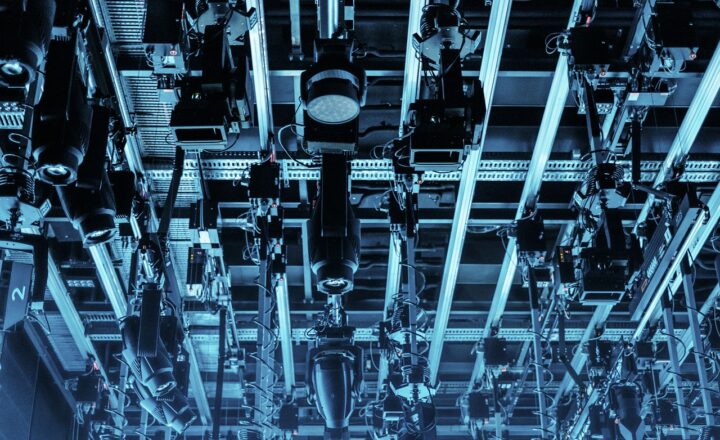How to Design and Build Your Own Drone with Arduino for Fun and Exploration
November 13, 2024

In the age of technology and innovation, building your own drone using Arduino not only ignites creativity but also enhances your understanding of electronics and aviation. This guide will walk you through the essential steps to design and construct your very own drone, providing you with a fun and rewarding exploration of this rapidly evolving technology.
1. Understanding the Basics of Drones
Drones, or unmanned aerial vehicles (UAVs), have a wide array of applications, from photography and surveillance to agriculture and personal recreation. Before diving into construction, it’s vital to understand the major components that make up a drone:
- Frame: The structure that holds all the components, typically made from lightweight materials like plastic or carbon fiber.
- Motors and Propellers: Motors provide the thrust needed for flight, while propellers convert this thrust into lift.
- Flight Controller: The brain of the drone, which interprets sensor data and manages the motors for stable flight.
- Battery: Provides the power needed for flight, often Lithium Polymer (LiPo) batteries are used due to their lightweight and high energy density.
- Remote Control System: Enables you to control the drone from a distance, typically using radio frequency technology.
Understanding these components is crucial as each plays a significant role in the design and function of your drone. Now, let’s move forward with the essential steps required for your build.
2. Materials You Will Need
Building a drone requires various components, which can be procured both online and at local electronics stores. Here’s what you’ll need:
- Arduino board (e.g., Arduino Uno or Nano)
- Drone frame (DIY or pre-manufactured)
- 4 brushless motors
- 4 electronic speed controllers (ESCs)
- Lithium Polymer (LiPo) battery
- Propellers (ensure they match your motor specifications)
- Flight controller module (e.g., MPU6050 for stability control)
- Remote control transmitter and receiver
- Charger compatible with your LiPo battery
- Wires, connectors, and soldering tools
- (Optional) GPS module (for advanced flying features)
Make sure to choose quality components that are compatible with each other to ensure optimal performance. Gathering all necessary tools beforehand will streamline the building process.
3. Building the Drone: Step-by-Step Procedure
Once you have your materials, it’s time to start building your drone! Follow this step-by-step guide:
Step 1: Assemble the Frame
Begin by assembling your frame. If you’re using a premade frame, simply ensure that it’s sturdy and all the parts are attached correctly. If crafting a DIY frame, lightweight materials such as wood or plastic are ideal. Make sure to fit it together securely and test its stability.
Step 2: Attach the Motors
Securely mount the brushless motors onto the frame at each corner. Make sure they’re facing outward for optimal thrust direction. It’s essential to use screws that won’t loosen over time during flight.
Step 3: Connect the Electronic Speed Controllers (ESCs)
Wire each ESC to its corresponding motor. Ensure that you follow the correct color codes when connecting (usually, black to negative, red to positive, and the remaining signal wire to the Arduino).
Step 4: Install the Flight Controller
Mount your flight controller in the middle of the frame for balance. Connect the ESCs to the flight controller as per the manufacturer’s instructions. Most modern controllers will come with a clear guide to help with connections.
Step 5: Connect the Battery and Test the System
Attach your LiPo battery to the frame securely. Before turning on, double-check all connections. Power on the drone and check that the motors spin correctly in response to the controller input. Start with small throttle adjustments and ensure that everything functions properly.
Step 6: Program the Arduino
Install the Arduino IDE on your computer. Write or download a basic flight control program that corresponds to the flight controller you are using. Upload the code to your Arduino board. Ensure that your program includes necessary parameters like motor control and sensor readings for stabilization.
Step 7: Fine-Tune and Calibrate
Calibrate your drone by adjusting the settings based on flight tests. It’s common to make adjustments to prevent the drone from tilting or crashing during initial flights. Fine-tuning your PID (Proportional-Integral-Derivative) settings can drastically improve stability.
4. Safety Considerations for Drone Flight
Safety should always be your priority when flying drones. Here are some essential tips:
- Fly your drone in open areas away from buildings, people, and trees to prevent accidents.
- Be aware of your local regulations regarding drone flying, including height restrictions and no-fly zones.
- Always keep your drone in your line of sight during flight to maintain control and ensure safety.
- Practice in stable weather, avoiding high winds or rain.
- Regularly check all components for wear and tear before each flight.
Following these guidelines will help ensure a safe and enjoyable flying experience.
5. Exploring Advanced Features
Now that you’ve built your drone, consider expanding its capabilities:
- Install a camera for aerial photography or videography.
- Incorporate a GPS module for autonomous flight capabilities.
- Experiment with various sensors for added functionalities like altitude hold or obstacle avoidance.
Pushing the boundaries of your drone’s capabilities can lead to exciting discoveries and a deeper appreciation for robotics.
Conclusion
Building your own drone with Arduino can be both an educational experience and a fun hobby. As you create and explore, you’ll not only gain hands-on skills in electronics but also develop an understanding of flight dynamics. With creativity and technical know-how, the sky’s the limit!
So gather your materials, follow this guide, and prepare for liftoff into a world of exploration and adventure. Who knows where your creations may take you next?







